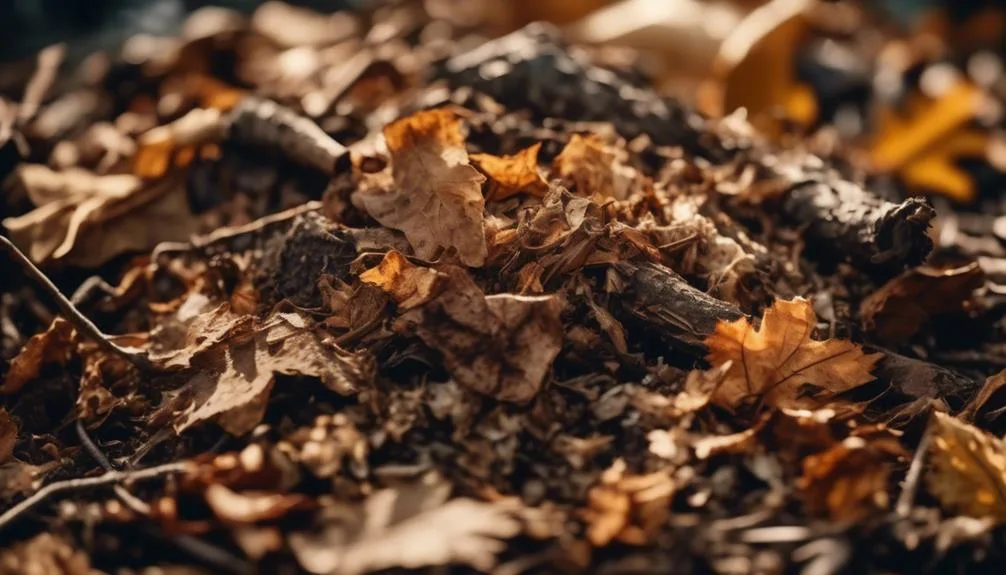Looking for a natural way to improve your composting? Ever thought about using sycamore bark? Gardeners believe it has benefits, but is it really good for composting? This discussion will explore the potential benefits of sycamore bark in composting, how to prepare it for the best results, and essential tips for using it in your composting routine.
Discover the secrets of sycamore bark and how it can improve your composting process.
Benefits of Sycamore Bark in Composting
Sycamore bark is an excellent addition to your compost pile due to its high carbon content and ability to improve aeration and water retention.
When added to compost, sycamore bark helps create air pockets, allowing oxygen to reach the microorganisms responsible for breaking down organic matter. This aids in the breakdown process, resulting in nutrient-rich compost.
Additionally, the fibrous nature of sycamore bark helps create a well-structured compost, improving overall aeration and water retention. As the sycamore bark breaks down, it releases valuable nutrients into the compost, further enriching the final product.
With its ability to enhance the breakdown process, improve aeration, and increase water retention, sycamore bark is a beneficial component for achieving high-quality compost.
Utilizing sycamore bark in your composting efforts can lead to healthier plants and a more sustainable gardening approach.
How to Prepare Sycamore Bark for Composting
To prepare sycamore bark for composting, start by breaking it into smaller pieces to accelerate the decomposition process and improve its integration into the compost pile. The smaller the pieces, the faster the bark will break down and release its nutrients into the compost. Here's a simple guide on how to prepare sycamore bark for composting:
| Sycamore Bark Preparation | |
|---|---|
| Step 1 | Break the bark into small, manageable pieces. |
| Step 2 | Create a separate pile for the bark to decompose. |
| Step 3 | Turn the pile regularly to ensure even decomposition. |
Following these steps will aid in the composting process and allow you to harness the benefits of sycamore bark effectively. Incorporating sycamore bark in your composting techniques can greatly enhance the overall quality of your compost and its uses in gardening.
Sycamore Bark Composting Tips
After preparing the sycamore bark for composting, you can optimize the process by following these effective composting tips.
To facilitate sycamore bark decomposition, it's essential to balance the carbon-rich bark with nitrogen-rich materials such as grass clippings or kitchen scraps.
Shred or chop the bark into smaller pieces to speed up the decomposition process, as this increases the surface area available for microbial activity.
It's also beneficial to layer the sycamore bark with other composting materials to ensure proper aeration and prevent the bark from compacting.
Regularly turning the compost pile will further aid in breaking down the bark and integrating it with other organic matter.
Sycamore Bark Composting FAQs
Wondering how sycamore bark can enhance your composting efforts?
Sycamore bark is an excellent addition to your compost pile. It aids in the decomposition process, breaking down slowly and adding valuable carbon to the mix. This helps balance the nitrogen-rich materials often found in compost, such as kitchen scraps and grass clippings.
The gradual decomposition of sycamore bark also means it provides a steady, long-term release of nutrients into the compost, benefiting the overall quality of the finished product. Additionally, the bark helps create air pockets within the compost, improving aeration and moisture retention. This can lead to a healthier and more efficient composting process.
Conclusion: Sycamore Bark in Composting
Curious about the benefits of incorporating sycamore bark into your composting routine? Sycamore bark offers several advantages when used in composting, making it a valuable addition to your gardening practices. Consider the following points:
- Moisture Retention: Sycamore bark helps retain moisture in the compost, ensuring a consistent level of hydration for the organic materials.
- *Benefit*: Reduces the need for frequent watering and promotes a healthy composting environment.
- Aeration: The coarse texture of sycamore bark facilitates air circulation within the compost pile, preventing it from becoming too compact.
- *Benefit*: Enhances decomposition and reduces the risk of anaerobic conditions.
- Nutrient Release: As sycamore bark breaks down, it releases valuable nutrients into the compost, enriching the soil when used as a fertilizer.
- *Benefit*: Supports the growth of plants and enhances overall soil quality.
Incorporating sycamore bark into your composting techniques can lead to improved moisture retention, better aeration, and enhanced nutrient release, ultimately contributing to healthier and more fertile soil.
Conclusion
Incorporating sycamore bark into your compost can enhance soil quality, enrich nutrients, and foster beneficial microbial activity. By shredding the bark and mixing it with other organic materials, you can create nutrient-rich compost for your garden.
Remember to maintain moisture and turn the compost regularly for optimal results.
How might this sustainable practice benefit your gardening journey?
Happy composting!

My interest in trees started when I first saw the giant sequoias in Yosemite.
I was a teenager then, and I remember thinking, “I need to learn more about this.”
That moment stuck with me.
A few years later, I went on to study forestry at Michigan Tech.
Since graduating, I’ve worked in a mix of hands-on tree care and community education.
I’ve spent over ten years helping people understand how to plant, maintain, and protect the trees in their neighborhoods.
I don’t see trees as just part of the landscape.
They are living things that make a real difference in our daily lives.
